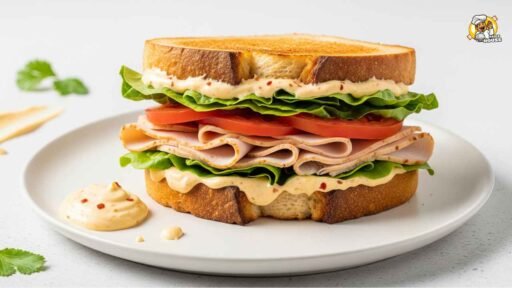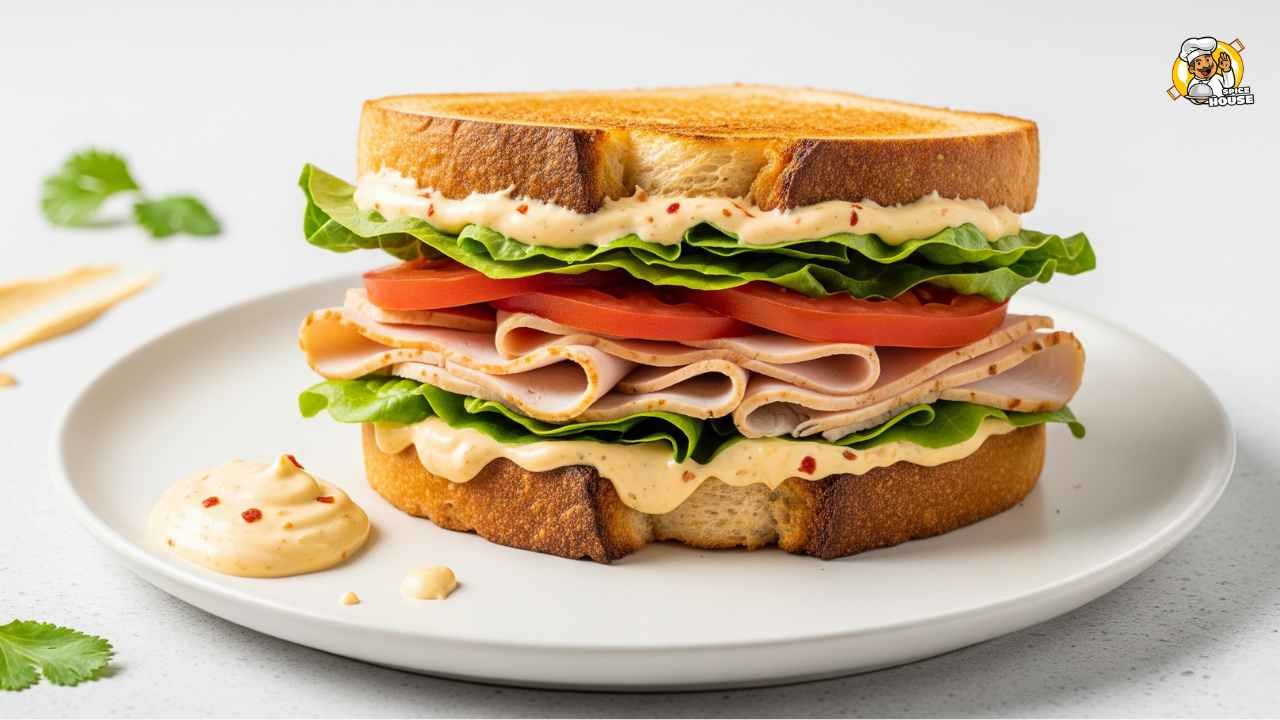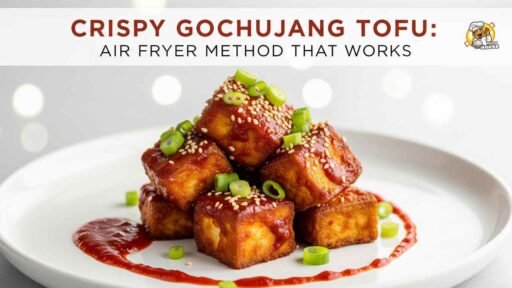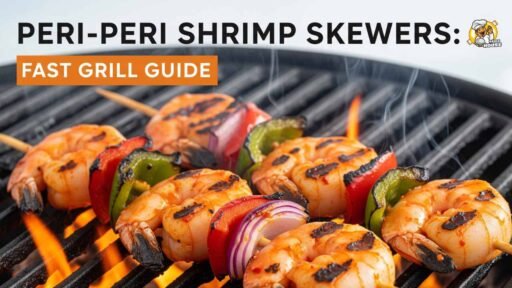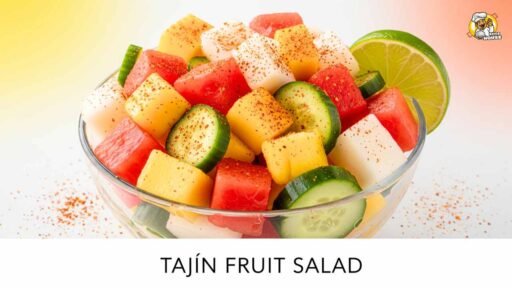Aji Amarillo aioli isn’t just another condiment; it’s a vibrant Peruvian twist that transforms everything it touches. With its golden hue and subtly smoky heat, this sauce strikes a balance between creamy garlic richness and peppery bite. Sources say it’s the secret weapon chefs use for sandwiches, seafood, or grilled veggies. Honestly? This smells like summer flame-kissed onto a spoon, perfect for adventurous home cooks chasing flavor.
Spice isn’t niche anymore; it’s the center of the plate. One global benchmark says nearly three in four consumers enjoy spicy foods at least sometimes, and momentum keeps building. That’s not just restaurant hype, it’s reshaping what we spread on bread at home. In a world of $12 takeout sandwiches and lingering food inflation, a five‑minute, bright‑gold aioli—powered by Peru’s fruity, sunlit aji amarillo—feels like a small but savvy upgrade that hits taste and cost at once.
Here’s the tension: legacy condiment giants (think the folks who put mayo in every fridge) versus home cooks and emerging brands who are chasing “purposeful heat”—flavor-forward spice that carries story and nuance, not just Scoville points. Investors watch that shift in the center store. Consumers feel it in the wallet and on weeknight menus. And yes, corporate menu teams feel it too. When the heat gets smarter, the old guard has to move faster, or move aside.
The Data:
-
According to Kalsec’s 2023 global hot-and-spicy report, roughly 76% of consumers say they enjoy spicy foods, and about one in three report eating spicier foods than a year ago. That signals a durable behavior shift, not a fad cycle.
-
The U.S. Bureau of Labor Statistics shows food-at-home prices remain materially higher than 2019 levels (roughly 20–25% depending on the category). Translation: pantry swaps that bring more flavor per dollar—like a quick aioli—feel like a smart response to sticky inflation.
-
McCormick’s 2024 Flavor Forecast (yes, the spice giant that steers big retail and foodservice portfolios) spotlights a wave of regional chiles and “nuanced global heat,” with a special nod to bright, fruity profiles. The company’s read: consumers now want heat with character.
Quick Aji Amarillo Aioli: Sandwich Flavor Bomb in 5 Minutes
-
Whisk 1 cup mayo with 1–2 tablespoons aji amarillo paste, 1 small grated garlic clove, 2 teaspoons fresh lime juice, and a good pinch of kosher salt. Taste and adjust. Done. It’s vivid, sunny, medium heat, and it clings to bread like a pro.
Aji Amarillo Aioli: Sandwich Flavor Bomb in 5 Minutes: Step-by-Step Guides 2025-2026

Step 1: Know Your Pepper And Source It Smart
Aji amarillo is the heartbeat of Peruvian flavor, a golden chile with medium heat and notes people describe as mango-meets-passionfruit, plus a soft grassy finish. It’s not a daredevil pepper. It’s cheerful heat: bright, round, and expressive. You can find it in four ways in the U.S.: jarred paste (most common), frozen whole chiles, dried pods, and occasionally fresh.
For the five-minute route, grab paste. Brands like Inca’s Food, Goya, and a handful of Peruvian importers keep it consistent. Paste is shelf-stable before opening, and it gives a predictable color and heat. Frozen whole peppers are great if you want to roast and blitz your own; they’re common in Latin grocery stores and some specialty markets. Dried pods can work, but they need to be softened, seeded, and blended; that’s more weekend energy than weekday.
Can’t source it today? The closest stand-in: blend a seeded habanero (fruit and heat), a chunk of yellow bell pepper (sweetness and color), and a coin of cooked carrot (for body and sunshine) with a splash of neutral oil. It’s not a perfect replica, but it hits the spirit—fruity, warm, bright. And if you’re sensitive to heat, start with a half tablespoon of paste per cup of mayo. You can always add more. You can’t unspice a spread once it’s in the jar.
Step 2: Pick your base and decide how “aioli” you want to be
There are two roads here. Classic aioli is an emulsion of egg yolk, garlic, oil, and acid. It’s gorgeous and takes a few minutes with a whisk or blender. But if we’re talking five minutes, the hack is simple: use a quality store-bought mayo as your base and let the aji amarillo paste carry the melody. Choose a mayo with a clean label and a neutral or lemony profile. Japanese-style mayo brings extra richness; vegan mayo keeps it plant-based. If you want to split the difference between classic and shortcut, whisk a small raw egg yolk into 1 cup of mayo to boost gloss and stability. (Use pasteurized yolk if raw eggs worry you.)
Flavor keys: fresh garlic (grated to a paste so the oil captures it), lime or lemon juice for brightness, and enough salt to make the chile sing. A tiny drizzle of olive oil (half a teaspoon) adds perfume, but don’t overdo it; too much grassy olive oil can crowd the fruit notes of the chile. Prefer no eggs at all? Use aquafaba (the liquid from a can of chickpeas). Two tablespoons whipped a bit with a handheld frother, then whisked with oil, make a quick vegan emulsion. But again, on a Tuesday, mayo is your friend.
Step 3: Blend And Balance For Color, Heat, And Cling
Ratios are your control panel. Start with 1 cup mayo, 1 tablespoon aji amarillo paste, 1 small garlic clove grated, 2 teaspoons lime juice, and 1/4 teaspoon kosher salt. Whisk 30 seconds until the color evens out to bright marigold. Taste. You’ll likely want another 1/2 to 1 tablespoon of paste to reach that “sandwich shop special sauce” intensity. The sweet spot for most people lands around 1.5 to 2 tablespoons of paste per cup. If the heat pops but the flavor feels flat, add a pinch more salt and another 1/2 teaspoon lime juice. If it tastes sharp, a tiny touch of honey (1/2 teaspoon) or a splash of evaporated milk—the Peruvian trick rounds edges without masking the fruit.
Texture matters. Great sandwich spreads cling without soggy bread. If your aioli looks loose, whisk in 1–2 teaspoons of mayo or a few drops of oil, beating air into it until it thickens. If it’s too stiff, add a teaspoon of water or lime juice and whisk to loosen. Pro move: Let the aioli sit for five minutes before final seasoning. Chiles “bloom” as they hydrate. The flavor opens, and the heat evens out. Then hit it with a last sprinkle of salt if needed. And yes, color is a cue here: you’re looking for vivid golden-yellow. If it’s pale, it probably needs a bit more paste.
Step 4: Apply Like a Sandwich Pro (Layering, Pairings, and Speed)
You want every bite to pull with you. That means spread both slices of bread, edge-to-edge, not just a dollop in the center. Start with a thin primer coat on the top slice and a heftier layer on the bottom slice; gravity works for you that way. Next, pick fillings that love sunshine and heat. Turkey + avocado + tomato feels tailor-made. Rotisserie chicken with thin red onion and a squeeze of lime? Done. Tuna melt gets a glow-up. Ham and Swiss suddenly punch above their weight. Crispy tofu with cucumbers and herbs? It sings. BLT becomes BLAT (add avocado) and tastes like a beach day.
Bread matters. Toasted sourdough carries acid that plays with the chile’s fruit. A soft potato roll leans into comfort. Whole wheat gives nuttiness that supports the pepper. For a Cubano or a panini, the press brings out the aioli’s aromatics and locks in a dripless texture. Want something Peru-adjacent? Make a chicken thigh sandwich: pan-seared thigh, aji amarillo aioli, pickled red onions, and greens on a crusty roll. Or do a breakfast version: fried egg, crispy potatoes, and your golden sauce on a buttered English muffin. Real talk: with this in the fridge, lunch stops being “what’s left?” and becomes “what stack gets the aioli?”
Step 5: Store, Scale, and Riff—Your Five-Minute Flavor Engine
Make once, enjoy all week. If you used store-bought mayo, your aji amarillo aioli keeps 5–7 days in the fridge in a tight jar. Label it (date and heat level), and keep it toward the back where the temperature stays cold. If you used a fresh egg yolk, aim to finish in 3 days. Always use clean utensils to scoop; double-dipping will shorten their life. For meal prep, a one-cup batch covers 6–8 hearty sandwiches or two dinners and a couple lunches. Don’t freeze it; the emulsion breaks.
Now the riffs. Cilantro-lime: blend in 2 tablespoons chopped cilantro and a pinch of ground cumin. Smoky amarillo: add 1/4 teaspoon smoked paprika and a squeeze of orange juice. Miso-aji: whisk in 1 teaspoon white miso; it adds depth and umami without extra salt. Yogurt-lifted: swap 1/4 cup of the mayo for Greek yogurt for a lighter tang (great on grilled veggies or salmon). Vegan? Use your favorite plant mayo; add a touch more lime to keep it bright. And don’t stop at sandwiches. This aioli loves roasted potatoes, grilled corn, shrimp tacos, grain bowls, and even crudités. Thin it with warm water to make a drizzly dressing for a quinoa salad. Brush it on grilled chicken in the last minute of cooking so it blisters and perfumes the whole plate. The point is leverage: five minutes buys you a week of “how did you make this?” moments.
The People
The spice industry’s loudest signals point in one direction: more nuanced heat, from more places, in more formats. McCormick & Co.’s annual Flavor Forecast has been beating that drum, and the team behind it doesn’t mince words: consumers are embracing “nuanced global heat” and “purposeful” spice. That aligns with what menu developers and grocers are seeing in real time. An R&D chef at a national sandwich brand—who didn’t want to be named—put it plainly: “Our guests want heat that tastes like something. Citrus-rind bright. Fruity. Savory. Not a dare.” This smells like a turning point for the category.
Peruvian chefs and food writers have been patient evangelists here, too. Talk to anyone cooking in Lima or in Peruvian spots stateside, and they’ll tell you aji amarillo is not a trend ingredient; it’s a pillar. It anchors classics like aji de gallina and papa a la huancaína. That matters for two reasons. First, it gives home cooks reliable guardrails—this pepper has decades of proven pairings. Second, it offers brands a narrative that’s richer than “new flavor drop.” Investors love stories with staying power, and aji amarillo has that. Meanwhile, consumer educators—culinary schools, test kitchens, even grocers’ in-house dietitians—have an easy on-ramp to teach: hit people with a five‑minute win (this aioli), then show them the rest of the Peruvian pantry. The slope from sandwich spread to ceviche marinade isn’t that steep.
A word of caution. Corporate spin can get breathless when trend decks pile up. Heat alone won’t save a mediocre product. Shoppers are smarter than that, and pantry space is tight. The winners will be the folks who pair quality sourcing with weeknight practicality. That’s why something as humble as a good aioli—no sachets, no sous vide, just a jar and a whisk—often outperforms limited-time menu stunts. Sources say the smartest chains are letting their test kitchens lead on this, not their ad teams.
The Fallout
When taste shifts, money follows. If you’re a legacy mayo brand, a five-minute, at-home aji amarillo aioli is threatening in the nicest possible way. It shows consumers they can win on flavor without a premium bottle. That pressures players like Kraft Heinz and Unilever (Hellmann’s) to either innovate with real-deal regional chiles—or risk being leapfrogged by private label and nimble upstarts who will. Expect more “Peruvian-inspired” squeezables to hit shelves. The question is whether they’ll taste like the pepper or a focus group’s idea of it.
For quick-service and fast-casual chains, the consequence is immediate: a punchy, bright aioli becomes a cheap way to update menu stalwarts and run high-margin limited-time offers. Analysts now predict condiments will carry more of the flavor halo in 2025 menus, because sauces are fast, scalable, and forgiving on operations.
If your back-of-house can handle a 1:1 whisk of mayo and paste, you can launch a whole line of “sunny heat” items without retraining. The cost is tiny; the perceived value is huge. Two teaspoons of sauce can move a $7 sandwich to $9. And if you’re a grocer, the center-store adjacency gets interesting. You’ll see cross-merchandising of aji amarillo paste near bread, deli meats, and even meal kits. It’s practical, and it converts.
Upstream, there’s a supply story. As demand for aji amarillo paste grows outside Latin markets, importers must balance quality with scale. Peru’s growers and processors benefit if buyers respect the pepper’s profile—ripe fruit, clean processing, no shortcuts. If they don’t, you get dull paste and a short trend cycle. McCormick & Co., with its global sourcing muscle, could help set the bar here. The company can do what it often does: validate a regional Chile by bringing consistent, shelf-stable formats to national accounts, while still leaving room for artisan brands to tell deeper origin stories. Slight skepticism is fair. Big firms love to call everything “authentic.” But the consumer palate has evolved; watery heat won’t fly.
At the household level, the fallout is simple: fewer bland sandwiches, less takeout drift, and a little more control over grocery bills. You buy one jar of paste, make three or four micro-batches of aioli, and your weekday meals get brighter. It’s not going to move the CPI, but it can shift your lunch spend. There’s also a wellness angle, not the diet kind, the joy kind. A condiment that makes leftovers feel new tends to reduce waste and boost cooking confidence. If that nudges more people into home cooking, even a little, the downstream effect is real.
Closing Thought
Condiments have always told the truth about what we crave. Today, we crave heat with a point of view—and aji amarillo has one. The five-minute aioli is proof that the winning play isn’t more heat; it’s better heat. So here’s the question for 2025: will Big Mayo buy, borrow, or build its way into this Peruvian sunshine, or will home cooks and smaller brands run the table while the giants chase the next sriracha?

